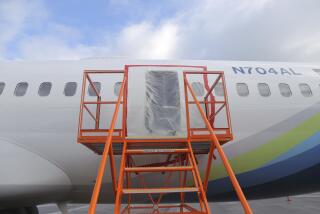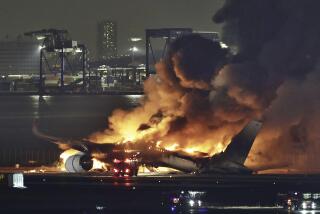Insulation Under Investigation in Crash of Swissair Flight 111
WASHINGTON — Investigators probing the wreckage of Swissair Flight 111 have found pieces of a type of thermal and sound insulation that has been implicated in the rapid spread of fires on at least four other jetliners, sources close to the investigation said Wednesday.
The thermal insulation blankets, which look similar to home insulation, met all Federal Aviation Administration standards for fire retardance and were used in aircraft for many years. But a series of aircraft fires from 1993 to 1995 persuaded McDonnell Douglas Corp., manufacturer of the Swissair MD-11, to recommend in 1997 that the blankets be replaced at “the earliest practical maintenance period” on at least 1,000 jets.
Investigators for the Transportation Safety Board of Canada are far from determining the cause of the Sept. 2 crash of the New York-Geneva flight off the Nova Scotia coast in which 229 people perished, and the role of the insulation blankets--if any--will not be determined for some time. However, accident investigations often highlight safety issues that may have little to do with the crash.
After the crash, Boeing Co., which merged with McDonnell Douglas last year, decided to bring together all carriers that use McDonnell jets at a meeting, beginning today, to consider speeding up implementation of previous manufacturer recommendations regarding fire and smoke. Sources said the blankets, made of a metalized Mylar, will be one of the major issues under discussion at the session in Long Beach.
The blankets insulate the aircraft from heat and noise. They are installed under the aircraft skin and in other areas where heat might be a problem, such as the electronics bay at the front of the aircraft.
They were placed on at least 1,000 McDonnell Douglas aircraft. A spokesman for Boeing said the company does not know how many of those planes have been retrofitted with newer insulation.
More to Read
Inside the business of entertainment
The Wide Shot brings you news, analysis and insights on everything from streaming wars to production — and what it all means for the future.
You may occasionally receive promotional content from the Los Angeles Times.










